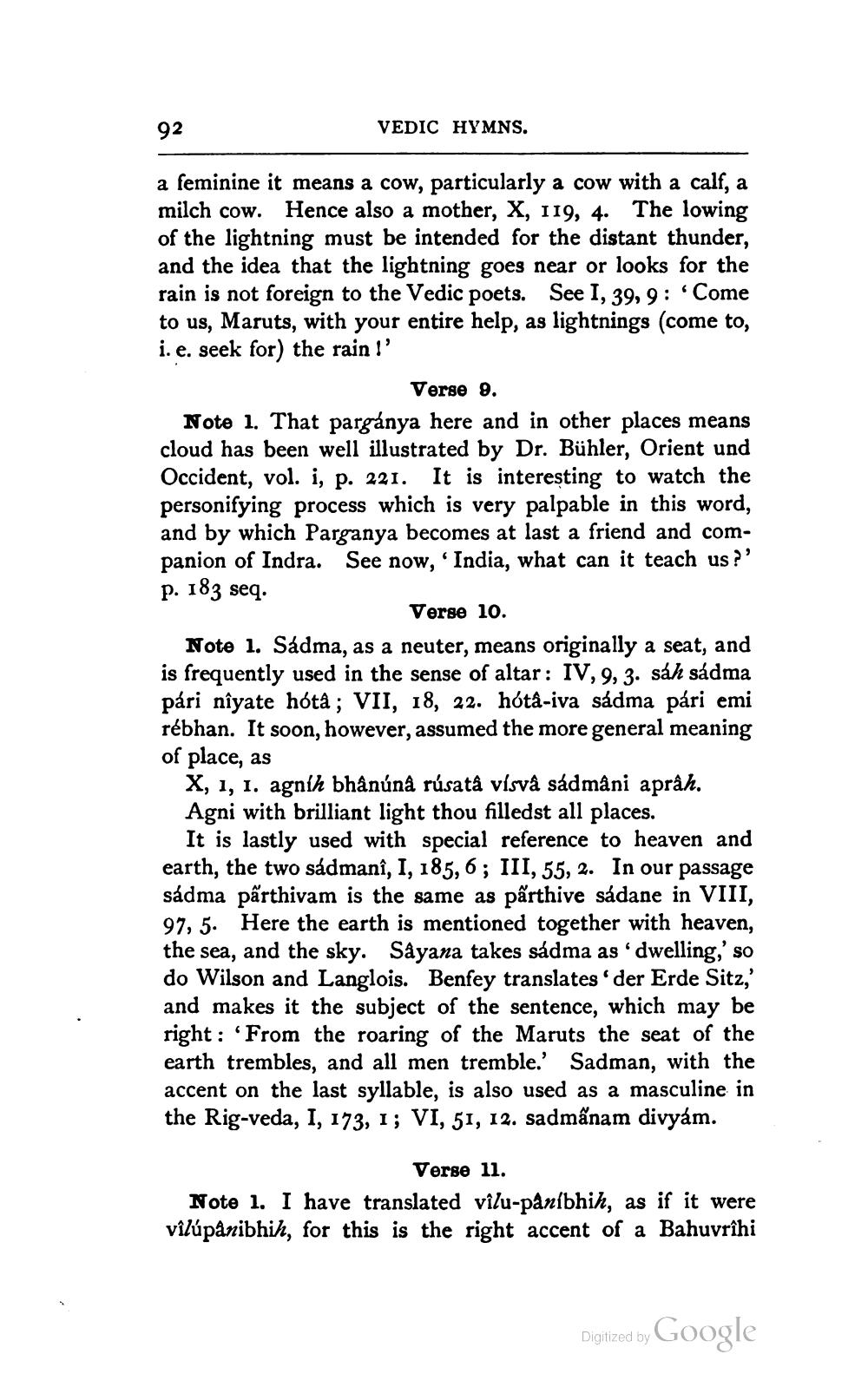________________
VEDIC HYMNS.
a feminine it means a cow, particularly a cow with a calf, a milch cow. Hence also a mother, X, 119, 4. The lowing of the lightning must be intended for the distant thunder, and the idea that the lightning goes near or looks for the rain is not foreign to the Vedic poets. See I, 39, 9: Come to us, Maruts, with your entire help, as lightnings (come to, i.e. seek for) the rain 1'
Verse 9. Note 1. That pargánya here and in other places means cloud has been well illustrated by Dr. Bühler, Orient und Occident, vol. I, p. 221. It is interesting to watch the personifying process which is very palpable in this word, and by which Parganya becomes at last a friend and companion of Indra. See now, 'India, what can it teach us?'
p. 183 seq.
Verge 10.
Note 1. Sádma, as a neuter, means originally a seat, and is frequently used in the sense of altar: IV, 9, 3. sáh sádma pári nîyate hótà ; VII, 18, 22. hótå-iva sádma pári emi rébhan. It soon, however, assumed the more general meaning of place, as
X, 1, 1. agníh bhånúnå rúsatâ vísvå sádmâni aprâh. Agni with brilliant light thou filledst all places.
It is lastly used with special reference to heaven and earth, the two sádmanî, I, 185, 6; III, 55, 2. In our passage sádma pârthivam is the same as parthive sádane in VIII, 97, 5. Here the earth is mentioned together with heaven, the sea, and the sky. Sayana takes sádma as dwelling,' so do Wilson and Langlois. Benfey translates der Erde Sitz,' and makes it the subject of the sentence, which may be right: 'From the roaring of the Maruts the seat of the earth trembles, and all men tremble.' Sadman, with the accent on the last syllable, is also used as a masculine in the Rig-veda, I, 173, 1; VI, 51, 12. sadmấnam divyám.
Verse 11. Note 1. I have translated vilu-paníbhih, as if it were vilúpânibhih, for this is the right accent of a Bahuvrihi
Digitized by
Digized by Google




